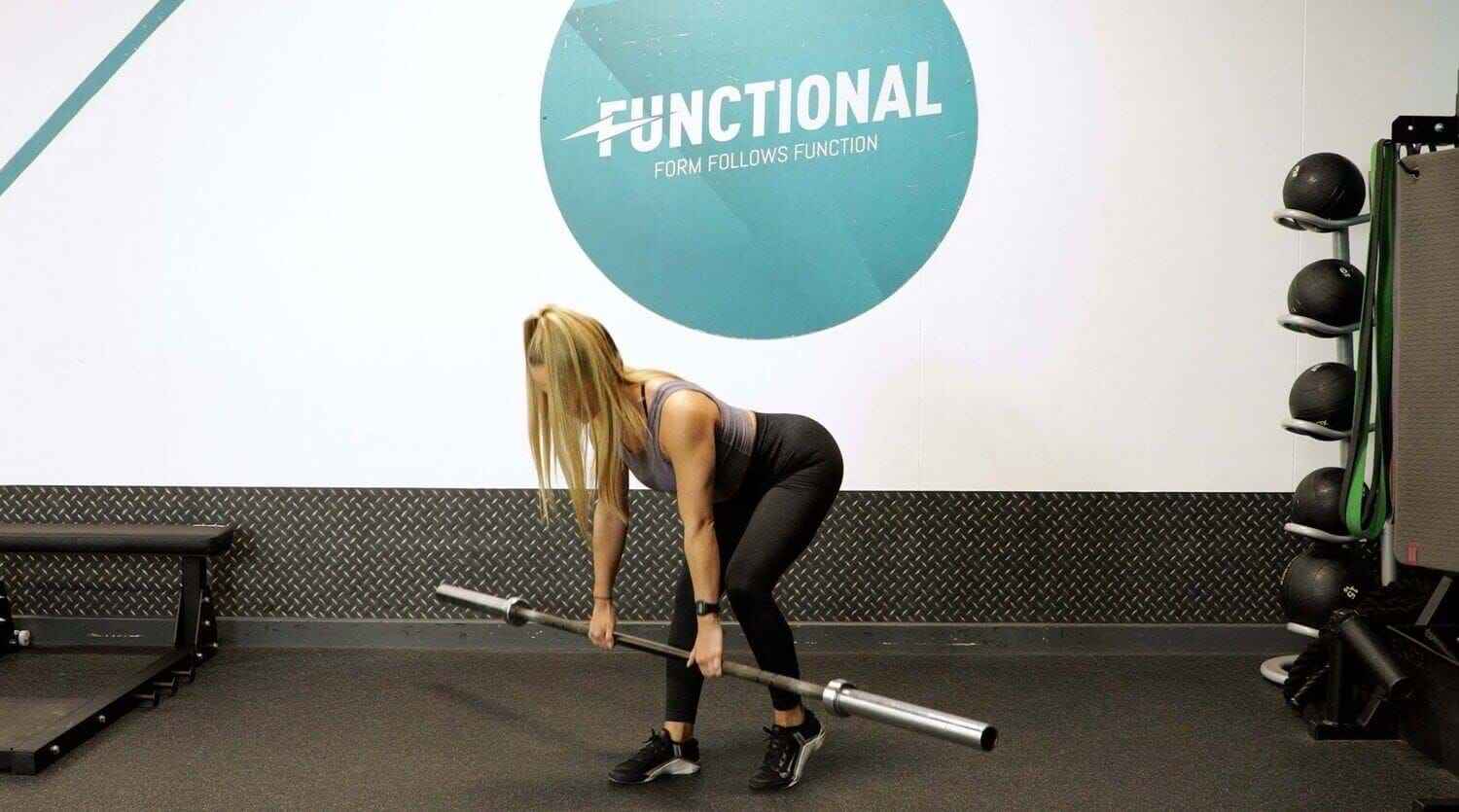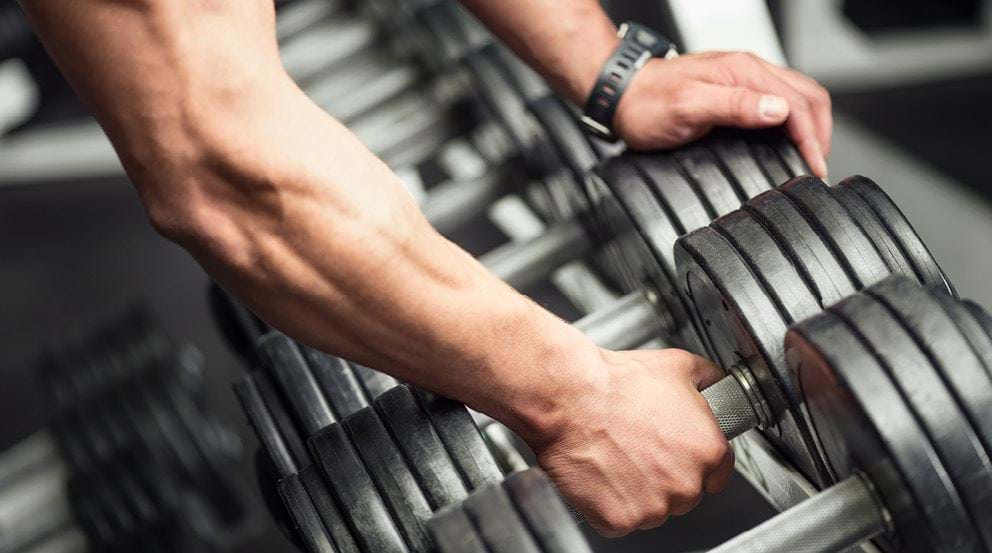Build Muscle with this Ultimate Hardgainer Workout Plan

What Is A Hardgainer | Why Standard Plans Don't Work | Tips & Advice | Workout
If one of your goals is to build muscle mass, but you don't seem to get results no matter what you do, you might be a hardgainer.
In this blog, PureGym London Stratford Personal Trainer Vito Ligorio shares how hardgainers can get results, including a free hardgainer workout plan to try.
What Is A Hardgainer?
The term 'hardgainer' refers to someone who practices bodybuilding but struggles to build muscle mass, even when training aggressively. Hardgainers typically have an ectomorph somatic body type, with longer leaner limbs, narrow shoulders and hips, and a faster metabolism, all which can make getting 'big' more challenging.
While it is often debated whether hardgainers exist, genetics do play a role in how muscle and how quickly people gain muscle by affecting factors like the distribution of different muscle fibre types, metabolic rate, and hormone levels. Some studies have shown that muscular hypertrophy 'non responders' (people who see no increase, or even a decrease, in muscle mass from resistance training) experience higher levels of inflammation and muscular damage from training, which may also be a factor.
However, no matter what your genetics are, building muscle mass is possible. Lifestyle factors such as diet, sleep, and stress, can play just as much a role as genetics do, and often are the biggest culprit why someone struggles to build muscle. Before you blame your genes and give up on bodybuilding, it's best to look at these external factors first.
Why Standard Bodybuilding Workout Plans Don’t Work For Hardgainers
While it is more challenging for hardgainers to build muscle, it is not impossible. However, standard bodybuilding workout plans may not work for several reasons:
Volume and recovery. Most bodybuilding workout plans have a high frequency with less rest, but hardgainers may be more likely to experience inflammation and muscle damage in response to training. They will benefit more from working out at a higher intensity less often, so there is more time for recovery and growth.
Not enough stimulus. While hardgainers need more recovery, they also need more stimulus to gain muscle. Many standard bodybuilding workout plans only work each muscle group once a week which isn't enough stimulus for a hardgainer.
Types of exercise. Most bodybuilding workouts place more emphasis on isolation exercises but hardgainers benefit from focusing their energy on compound exercises.
Nutrition. Hardgainers usually need to eat more calories and protein than the average person due to their higher metabolisms and to protect against muscular damage and inflammation.
What To Do Instead: Advice For Hardgainers
If you’re looking to build muscle as a hardgainer, here’s what you need to know.
Hardgainer Workout Schedule: How Often To Train
Hardgainers likely need more rest to account for additional inflammation and muscle damage that occurs when weight training. A good aim is to do around 3-4 sessions per week to allow full recovery.
There are plenty of ways this can look but an example of a good hardgainer workout plan could be:
Monday: Lower body (squat focus)
Wednesday: Upper body (push focus)
Friday: Lower body (deadlift focus)
Saturday: Upper body (pull focus)
Progressive Overload
Progressive overload involves increasing the challenge you place your muscles under each week. The body is great at adapting to stressors, including exercise. Over time, this means the body handles workouts more efficiently and stops progressing. Progressive overload means the body is constantly faced with a greater challenge than it is used to, so it continues to progress.
To progressive overload your workouts, aim to add reps each week until you are at the top of your rep range, then add enough weight to bring you to the lowest rep in your goal rep range. Continue with this cycle to get stronger and build more muscle.
Learn more in our guide to progressive overload here.
Sets And Reps
Speaking of reps and sets, here is what to aim for in your hardgainer workout programme to build muscle and strength:
Sets: 3 – 5 sets per exercise
Reps: 6 – 12 reps per set.
For each set, you should train close to failure. This means that each set should be challenging, but not so much you fair to complete your reps. Aim to have 1 – 2 reps left in the tank, finishing before your form breaks down.
Best Exercises For Hardgainers
Compound movements are the best exercises for building muscle for hardgainers. These multi joint exercises recruit multiple muscle groups at the same time and allow you to lift heavier weights, meaning you get more intensity and load with less exercises needed.
Choosing compound exercises instead of isolation exercises mean you get more stimulus with less volume, two key aspects of training that hardgainers need. Some research shows that compound lifts produce larger amounts of testosterone and human growth hormone which can help with building muscle too.
Example compound exercises are:
Nutrition
Many people who struggle to bulk up may just not be eating enough. Building mass requires you to eat a surplus of calories, which is what the body uses to build more muscle. Hardgainers tend to have higher metabolisms which can make eating at a surplus challenging, either due to appetite or simply not knowing how much they need to eat.
The first step is to work out your total daily energy expenditure (TDEE); how many calories you burn on the average day. You can do this by using TDEE calculators or by tracking the calories in what you normally eat for a few days.
Once you know your TDEE, aim to eat an additional 300-500 calories a day and track your progress – if you are still not gaining weight after 4 – 8 weeks you will need to increase this further.
If you struggle with eating the extra calories, add calorie dense foods like cheese, avocado, peanut butter, and even weight gainer shakes, to your meals to increase the calories without adding too much volume.
In addition to eating a calorie surplus, what you eat is important for hardgainers. Your diet should include plenty of protein (around 1.4 – 2g protein per kg bodyweight) to help build and repair your muscles, and lots of carbohydrates to fuel your workouts. You also need healthy fats to help with hormone production, vitamin absorption, and cell repair.
Lifestyle Factors
Lifestyle can have a huge impact on building muscle.
Sleep: Getting enough sleep is crucial for muscle growth. During sleep, the body releases human growth hormone, which helps to repair and build muscle, and restocks muscle glycogen levels, which is used for fuel in work outs. Lack of sleep is also linked to disrupted hormone production, including testosterone.
Stress levels: Stress causes the body to produce cortisol, a hormone that can wreak havoc when constantly produced due to chronic stress levels. Consistently high cortisol levels have been found to impact human growth hormone levels and protein synthesis and can even trigger muscle wastage. It also contributes to inflammation, which can impact muscle growth, and often impacts sleep and nutrition, directly affecting muscle growth that way.
Recovery: Getting enough recovery is important for everyone who trains, but even more so in hardgainers. Doing less, but more intense workouts, with more adequate recovery is important.
Consistency
Building muscle is a slow process, and it can take even longer for hardgainers. Staying consistent, even if you don’t see results right away, is key to seeing gains in the long run. Tracking your strength and weight gains can help you to see improvements more easily and can help you keep motivated, especially in the early stages. You should begin to see visible results in around three months.
Example Bodybuilding Hardgainer Workout
Looking for a ready made workout routine for hardgainers to follow? This workout plan follows the training principles a hardgainer should include, such as prioritising compound exercises and allowing for plenty of rest. Make sure you progressively overload each week and check in with your results every 4 – 8 weeks: if you are not seeing results, adjust as necessary.
Day 1 – Lower (Squat Focus)
Barbell back squat – 4 sets x 6–8 reps
Romanian deadlift – 3 sets x 8–10 reps
Walking lunges – 3 sets x 10 reps each leg
Seated calf raise – 3 sets x 12–15 reps
Day 2 – Upper (Push Focus)
Barbell bench press – 4 sets x 6–8 reps
Seated overhead dumbbell press – 3 sets x 8–10 reps
Incline dumbbell press – 3 sets x 10 reps
Tricep dips – 3 sets x 12–15 reps
Day 3 – Lower (Deadlift Focus)
Conventional deadlift – 4 sets x 6 reps
Front squat – 3 sets x 8 reps
Bulgarian split squat – 3 sets x 8–10 reps each leg
Standing calf raise – 3 sets x 12–15 reps
Day 4 – Upper (Pull Focus)
Barbell row – 4 sets x 8 reps
Pull ups (assisted if needed) – 3 sets x 6–10 reps
Face pulls – 3 sets x 12 reps
Hammer curls – 3 sets x 12–15 reps
Want more weight gain advice? Check out our complete workout guide for skinny guys here. If you'd prefer more tailored advice, working with a Personal Trainer like Vito is a great way to reach your goals.
Get started at one of our gyms near you today.


